Abstract
The earliest detectable event at future sites of cell division in Escherichia coli is the appearance of paired periseptal annuli that flank the site of formation of the division septum. The development and localization of these structures were followed as the cell progressed through the division cycle. The data suggest that (i) new periseptal annuli are generated from annuli already in position at the midpoint of the newborn cell; (ii) the nascent annuli are then displaced laterally during cell elongation to positions at 1/4 and 3/4 cell length; and (iii) the annuli at 1/4 and 3/4 cell length are retained during division, becoming the midpoint annuli of the newborn cells at the sites of the forthcoming division septum. The results indicate that the sites of future divisions can be identified and committed to the division process prior to the division cycle in which these sites are utilized for septum formation, and they suggest a model in which preexisting sites of cell division generate future division sites by a replication/displacement mechanism.
Full text
PDF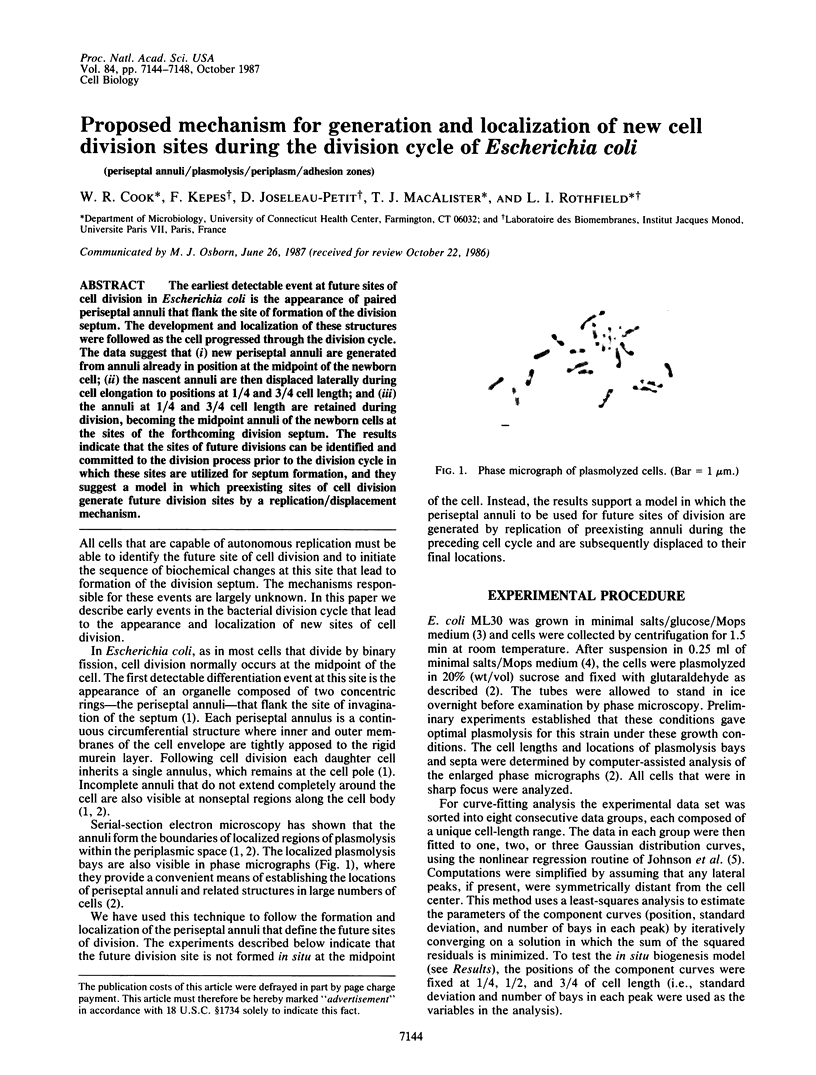
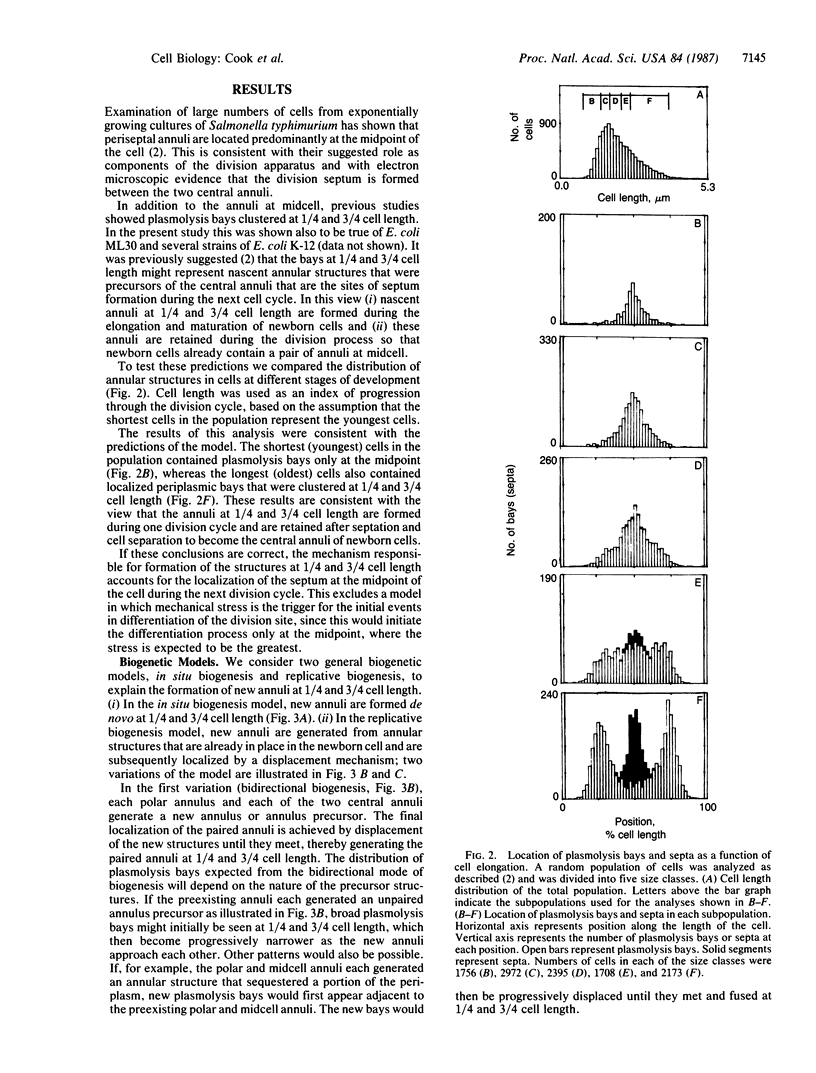
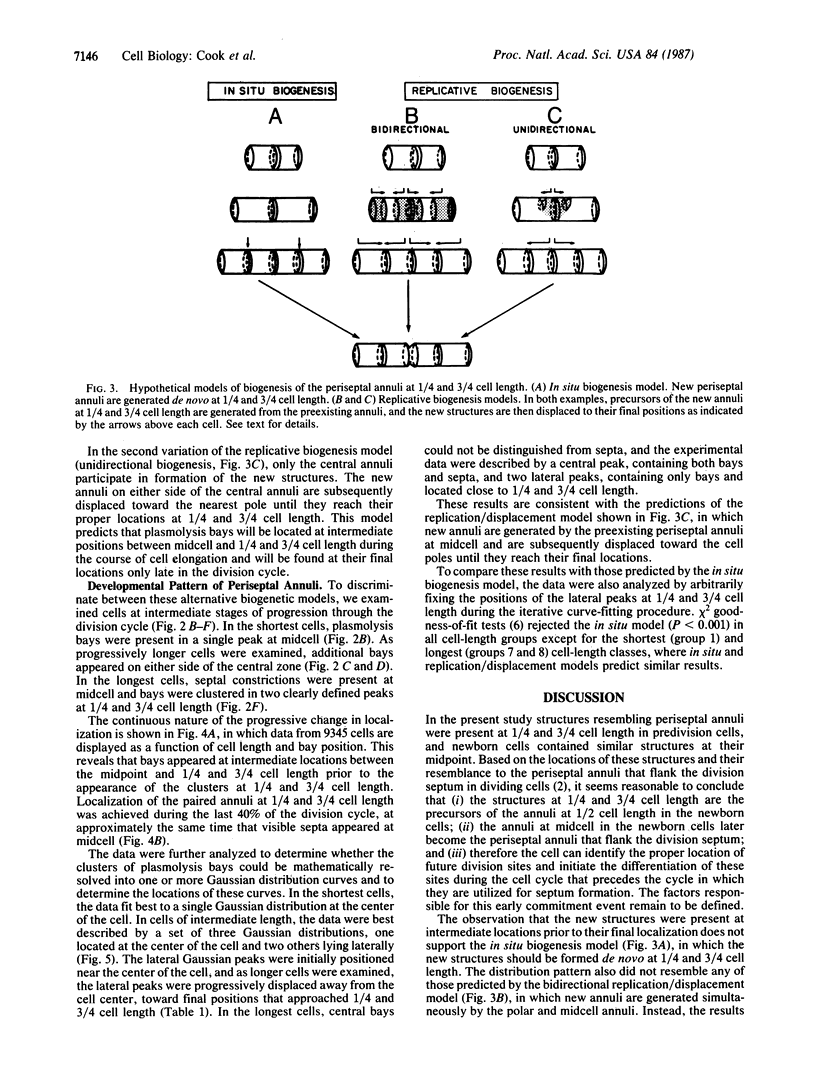
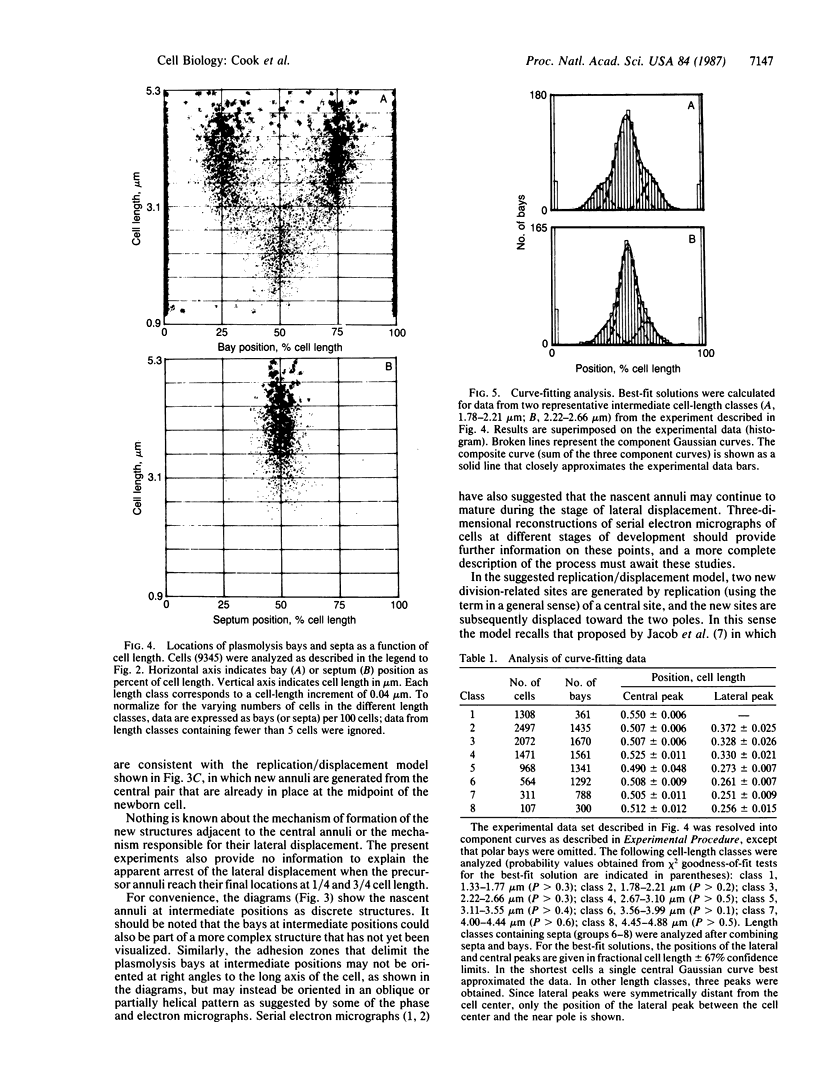
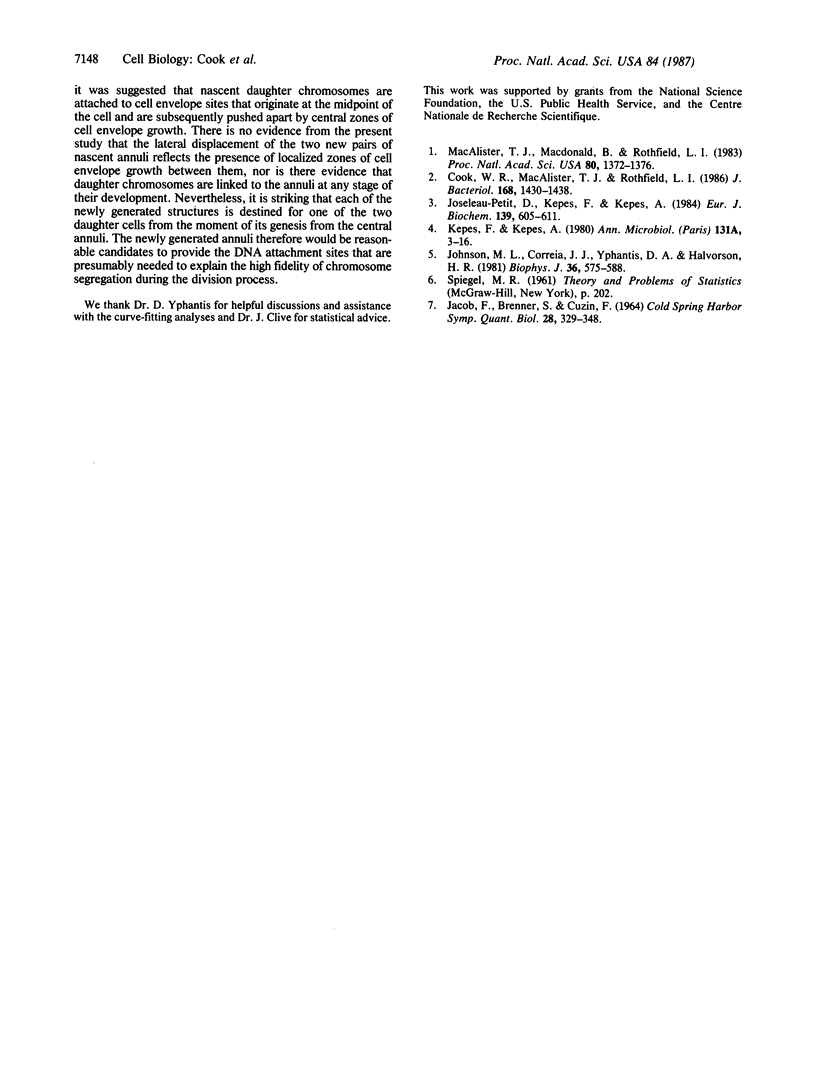
Images in this article
Selected References
These references are in PubMed. This may not be the complete list of references from this article.
- Cook W. R., MacAlister T. J., Rothfield L. I. Compartmentalization of the periplasmic space at division sites in gram-negative bacteria. J Bacteriol. 1986 Dec;168(3):1430–1438. doi: 10.1128/jb.168.3.1430-1438.1986. [DOI] [PMC free article] [PubMed] [Google Scholar]
- Johnson M. L., Correia J. J., Yphantis D. A., Halvorson H. R. Analysis of data from the analytical ultracentrifuge by nonlinear least-squares techniques. Biophys J. 1981 Dec;36(3):575–588. doi: 10.1016/S0006-3495(81)84753-4. [DOI] [PMC free article] [PubMed] [Google Scholar]
- Joseleau-Petit D., Kepes F., Kepes A. Cyclic changes of the rate of phospholipid synthesis during synchronous growth of Escherichia coli. Eur J Biochem. 1984 Mar 15;139(3):605–611. doi: 10.1111/j.1432-1033.1984.tb08047.x. [DOI] [PubMed] [Google Scholar]
- Kepes F., Kepes A. Synchronisation automatique de la croissance de Escherichia coli. Ann Microbiol (Paris) 1980 Jan-Feb;131(1):3–16. [PubMed] [Google Scholar]
- Macalister T. J., Macdonald B., Rothfield L. I. The periseptal annulus: An organelle associated with cell division in Gram-negative bacteria. Proc Natl Acad Sci U S A. 1983 Mar;80(5):1372–1376. doi: 10.1073/pnas.80.5.1372. [DOI] [PMC free article] [PubMed] [Google Scholar]



